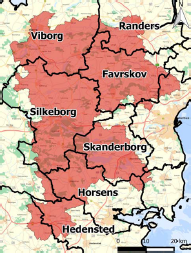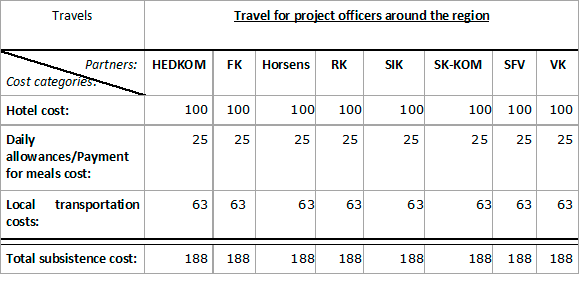The project is a cross-border project involving the 7 municipalities along the River Gudenå and one utility.
A hydrological model is developed for the watercourse, the land use is mapped, the possible actions to handle increased volumes of water is identified.
Test scenarios for different solutions in the model will be made. This mapping lays the basis for a common understanding of the consequences of climate change in the catchment.
Next step is the creation of a vision and a goal for a Climate Change Adaption (CCA) approach. Furthermore, stakeholders will prepare conceptual designs for physical solutions in the River Gudenå catchment, and identify suitable approaches to dealing with water. This action primarily links to governance within sea & fjords and rivers.
Main responsible beneficiary: Silkeborg Municipality
Number of days estimated spent on action in phase 1: 618 Days
Budget: 801.946€
Beneficiaries responsible for implementation:
Seven partners (municipalities) directly affected by the River Gudenå CCA challenges:
- Silkeborg (SIK),
- Hedensted (HEDKOM),
- Horsens (Horsens),
- Skanderborg (SK-KOM),
- Favrskov (FK),
- Viborg (VK), and
- Randers (RK).
Furthermore, Skanderborg Waste Water Utility (SFV) is partner, since the waterlevel directly affects its operations and systems.
The role of Silkeborg Municipality:
- Is the project manager
- Cooperates with the six other municipalities and Skanderborg Waste Water Company
- Works with secondary stakeholders in each municipality - such as, in the case of SIK - Vandløbslauget for Gudenåen (Silkeborg til Kongensbro), Grundejereforeningen Sølyst (Silkeborg Langsø), Silkeborg Fiskeriforening, Danmarks Naturfredningsforening (local branch).
- Reports and cooperates with PM (CDR), C11 project manager, and C14 project manager as well as other C2C CC partners
Relation to CCA plans
- HEDKOM: Municipal spatial plan
- Horsens CCA plan
- SK-KOM CCA plan
- SIK CCA plan
- FK CCA plan
- VK Municipal spatial plan
- RK CCA plan


